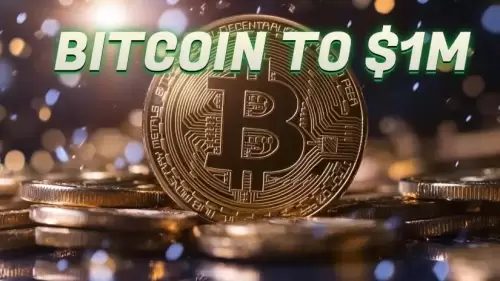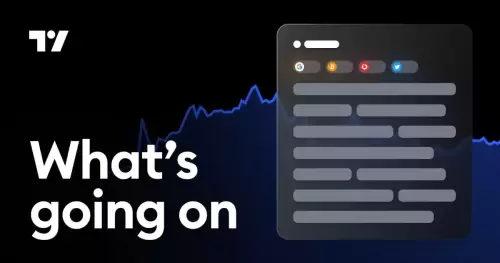 |
|
 |
|
 |
|
 |
|
 |
|
 |
|
 |
|
 |
|
 |
|
 |
|
 |
|
 |
|
 |
|
 |
|
 |
|
隨著數字基礎架構(公共Wi-Fi,雲存儲,物聯網(IoT)設備)無處不在,因此需要無縫,低成本支付系統的需求增長。

As digital infrastructure—public Wi-Fi, cloud storage, Internet of Things (IoT) devices—becomes ubiquitous, the need for seamless, low-cost payment systems grows. BSV, with its ultra-low transaction fees and high throughput, is uniquely positioned to create micropayment ecosystems for pay-per-use digital infrastructure. From incentivizing decentralized computing networks to enabling real-time payments for smart meters, BSV offers a scalable, secure framework that traditional payment systems cannot match.
隨著數字基礎架構(公共Wi-Fi,雲存儲,物聯網(IoT)設備)無處不在,因此需要無縫,低成本支付系統的需求增長。 BSV具有超低交易費用和高吞吐量,是為每次使用付費數字基礎設施創建微型生態系統的獨特定位。從激勵分散的計算網絡到實現智能電錶的實時付款,BSV提供了一個可擴展,安全的框架,傳統支付系統無法匹配。
This article explores how BSV addresses the monetization challenges of digital infrastructure and its potential to reshape how we access and pay for digital services.
本文探討了BSV如何應對數字基礎架構的貨幣化挑戰及其重塑我們如何訪問和支付數字服務的潛力。
The micropayment gap in digital infrastructure
數字基礎設施中的微元差距
Digital infrastructure relies on microtransactions to monetize usage, but traditional payment systems like credit cards or bank transfers are too costly for small-value transactions. For example, charging $0.01 for a minute of public Wi-Fi incurs processing fees that exceed the revenue. This gap stifles innovation in pay-per-use models, from decentralized cloud storage to IoT-enabled smart cities. So, how do we make cents viable?
數字基礎架構依靠微交易來獲取利用,但是傳統的支付系統(例如信用卡或銀行轉移)對於小價值交易而言太昂貴了。例如,一分鐘的公共Wi-Fi收取0.01美元的費用會產生超過收入的處理費。從分散雲存儲到具有IOT的智能城市,這種差距扼殺了每次使用付費模型的創新。那麼,我們如何使美分可行?
Blockchain-based micropayments offer a solution, but most blockchains are ill-suited for high-frequency, low-value transactions. Ethereum’s high gas fees and BTC’s limited throughput make them impractical for infrastructure-scale use. BSV, with its scalable architecture and near-zero fees, fills this niche, enabling a new era of pay-per-use digital services.
基於區塊鏈的微付款提供了解決方案,但是大多數區塊鏈不適合高頻,低價值交易。以太坊的高汽油費和BTC的有限吞吐量使它們對於基礎設施規模的使用不切實際。 BSV憑藉其可擴展的體系結構和接近零的費用填補了這一利基,這使得付費每次使用數字服務的新時代。
BSV’s technical strengths for micropayments
BSV的微付款技術優勢
Niche applications: Monetizing infrastructure
利基應用:貨幣化基礎設施
BSV’s micropayment capabilities enable innovative use cases. Public Wi-Fi networks, often free or ad-supported, could adopt pay-per-use models, with users paying $0.001 per megabyte via BSV wallets like HandCash. Decentralized computing networks, similar to Filecoin, could use BSV to incentivize nodes with micropayments for CPU cycles or storage, creating a global marketplace for compute resources.
BSV的微債能力可實現創新的用例。公共Wi-Fi網絡(通常是免費的或受廣告支持)可以採用按使用付費模型,用戶通過BSV錢包(如Handcash)的價格為每兆字節支付0.001美元。類似於Filecoin的分散計算網絡可以使用BSV來激勵與CPU週期或存儲的微型節點激勵節點,從而為計算資源創造全球市場。
IoT devices, such as smart meters or electric vehicle chargers, benefit from BSV’s real-time payment capabilities. A smart meter could charge $0.01 per kilowatt-hour, settling payments instantly on-chain. This reduces billing overhead and enables dynamic pricing. BSV’s low costs also make it viable for niche APIs, where developers pay per query, fostering innovation in data-driven services.
物聯網設備(例如智能電錶或電動汽車充電器)受益於BSV的實時支付功能。一個智能電錶可以每千瓦時收取0.01美元的收費,立即定居付款。這減少了開銷的開銷,並實現了動態定價。 BSV的低成本也使其可行,對於利基API,開發人員每個查詢付費,從而促進了數據驅動服務的創新。
The future: A micropayment-driven economy
未來:微型驅動的經濟
BSV’s potential to monetize digital infrastructure is gaining traction. Platforms are building BSV micropayment frameworks, while the BSV Association (BSVA) is promoting its adoption in IoT and smart city projects. As digital infrastructure expands, with the global IoT spending projected to hit $1.1 trillion by 2028, BSV’s scalable, low-cost payments could become a standard.
BSV使數字基礎設施獲利的潛力正在獲得吸引力。平台正在構建BSV微型付款框架,而BSV協會(BSVA)正在促進其在物聯網和智能城市項目中的採用。隨著數字基礎設施的擴大,到2028年,全球物聯網支出預計將達到1.1萬億美元,BSV的可擴展性低成本付款可能會成為標準。
Challenges include user adoption and integration with existing systems. However, BSV’s regulation-friendly design and growing ecosystem position it for success. By enabling pay-per-use models, BSV could transform how we access digital services, from Wi-Fi to cloud computing.
挑戰包括用戶採用和與現有系統集成。但是,BSV的法規友好設計和不斷增長的生態系統將其定位為成功。通過啟用按使用付費模型,BSV可以改變我們訪問數字服務的方式,從Wi-Fi到雲計算。
Conclusion
結論
BSV’s ultra-low fees, high throughput, and smart contract capabilities make it a powerhouse for micropayment ecosystems in digital infrastructure. Its ability to monetize public Wi-Fi, decentralized computing, and IoT devices unlocks new business models and fosters innovation. As the demand for seamless, low-cost payments grows, BSV stands ready to redefine how we pay for digital services, proving that micropayments can drive the next wave of digital transformation.
BSV的超低費用,高吞吐量和智能合同功能使其成為數字基礎設施中微型生態系統的強大功能。它能夠通過公共Wi-Fi,分散計算和IoT設備獲利的能力來解鎖新的商業模式並促進創新。隨著對無縫低成本支付的需求的增長,BSV準備重新定義我們如何為數字服務支付,證明微付款可以推動下一波數字化轉型浪潮。
Watch: Peer-to-peer electronic cash system—that’s micropayments
觀看:點對點電子現金系統 - 微付款
免責聲明:info@kdj.com
所提供的資訊並非交易建議。 kDJ.com對任何基於本文提供的資訊進行的投資不承擔任何責任。加密貨幣波動性較大,建議您充分研究後謹慎投資!
如果您認為本網站使用的內容侵犯了您的版權,請立即聯絡我們(info@kdj.com),我們將及時刪除。
-

-

- 比特幣儲備金,價格和超級儲備:將加密貨幣浪費到100萬美元?
- 2025-07-27 11:30:39
- 分析政府比特幣儲量,價格波動的影響以及比特幣在不斷發展的加密景觀中的潛力。
-

- 聰明的錢移動:錢包提取,SPX的積累以及這意味著什麼
- 2025-07-27 11:10:41
- 深入了解最近的SPX代幣運動,聰明的貨幣積累以及對加密投資者的影響。這是看漲情緒還是其他的標誌?
-

- 以太坊,賈斯汀·孫和市場猜測:加密雞尾酒
- 2025-07-27 10:46:15
- 分析涉及以太坊,賈斯汀·孫(Justin Sun)的最新事件及其對市場投機的影響。大型ETH轉移和投資者情緒的轉變意味著什麼?
-

- 模因硬幣在2025年7月:比特幣可靠嗎?
- 2025-07-27 10:00:00
- 模因硬幣將於2025年7月竊取節目!在模因硬幣市場中發現最熱門的趨勢,主要參與者和潛在的月球,並具有比特幣的扭曲。
-

-

- 拖釣者貓的模因經濟能力:預售ROI和病毒統治
- 2025-07-27 09:33:14
- Troller Cat以令人印象深刻的預售ROI和創新的病毒力學在模因經濟中引起了海浪。是矮胖企鵝之後的下一件大事嗎?
-

- 比特幣價格翻滾:圖表模式向下指向?
- 2025-07-27 09:30:08
- 作為圖表模式和市場分析,比特幣面臨潛在的價格下跌,表明看跌前景。 BTC會違背賠率或屈服於下降趨勢嗎?
-

- 以太坊的看漲案例:旗幟模式指向4,800美元?
- 2025-07-27 09:28:14
- 以太坊閃爍著看漲的旗幟,如果它清除了關鍵阻力,則暗示潛在的激增至4,800美元。這是我們一直在等待的突破嗎?






























































